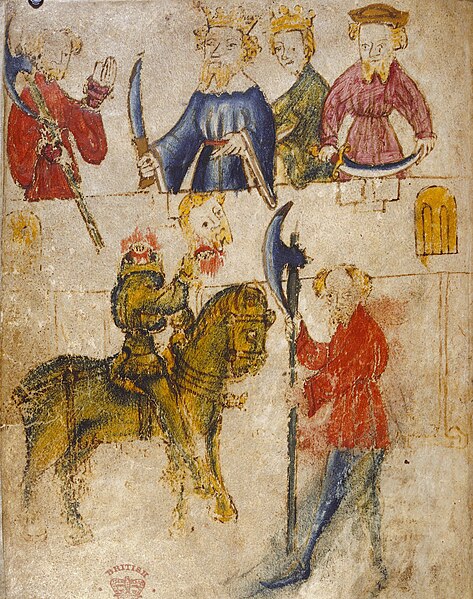Tolkien's impact on fantasy
Although fantasy had long existed in various forms around the world before his time, J. R. R. Tolkien has been called the "father of fantasy", and The Lord of the Rings its centre. That novel, published in 1954–5, enormously influenced fantasy writing, establishing in particular the form of high or epic fantasy, set in a secondary or fantasy world in an act of mythopoeia. The book was distinctive at the time for its considerable length, its "epic" feel with a cast of heroic characters, its wide geography, and its battles. It involved an extensive history behind the action, an impression of depth, multiple sentient races and monsters, and powerful talismans. The story is a quest, with multiple subplots. The novel's success demonstrated that the genre was commercially distinct and viable.
A Tolkien fan in a The Lord of the Rings fantasy costume, Budapest, 2015
Tolkien created or popularized fantasy elements such as heroes, quests, magical objects, wizards, elves, dwarves, and monsters including Gollum. Painting of Gollum by Frederic Bennet, 2014
Middle-earth video games at E3 2011
Impression of depth in The Lord of the Rings
The impression of depth in The Lord of the Rings is an aesthetic effect deliberately sought by its author, J. R. R. Tolkien. It was intended to give the reader the feeling that the work had "deep roots in the past", and hence that it was attractively authentic.
Tolkien admired the impression of depth in Sir Gawain and the Green Knight. Illustration from the medieval manuscript
Apparent contradiction: Tolkien stated that Elves rode without saddle or harness of any kind, but gives Glorfindel's horse both bit and bridle (modern bit and bridle shown).





